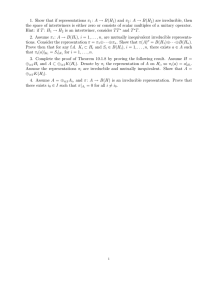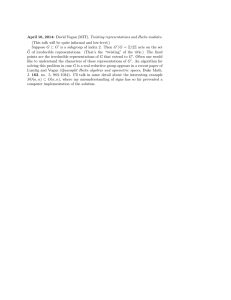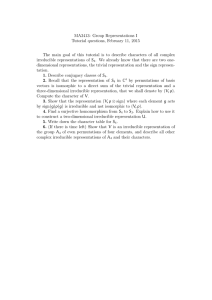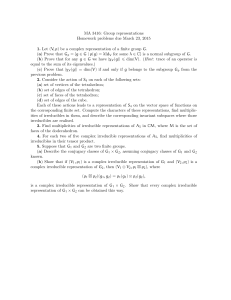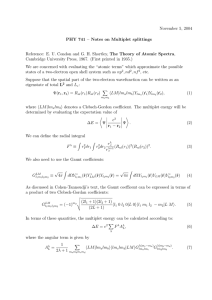Document 13646683
advertisement
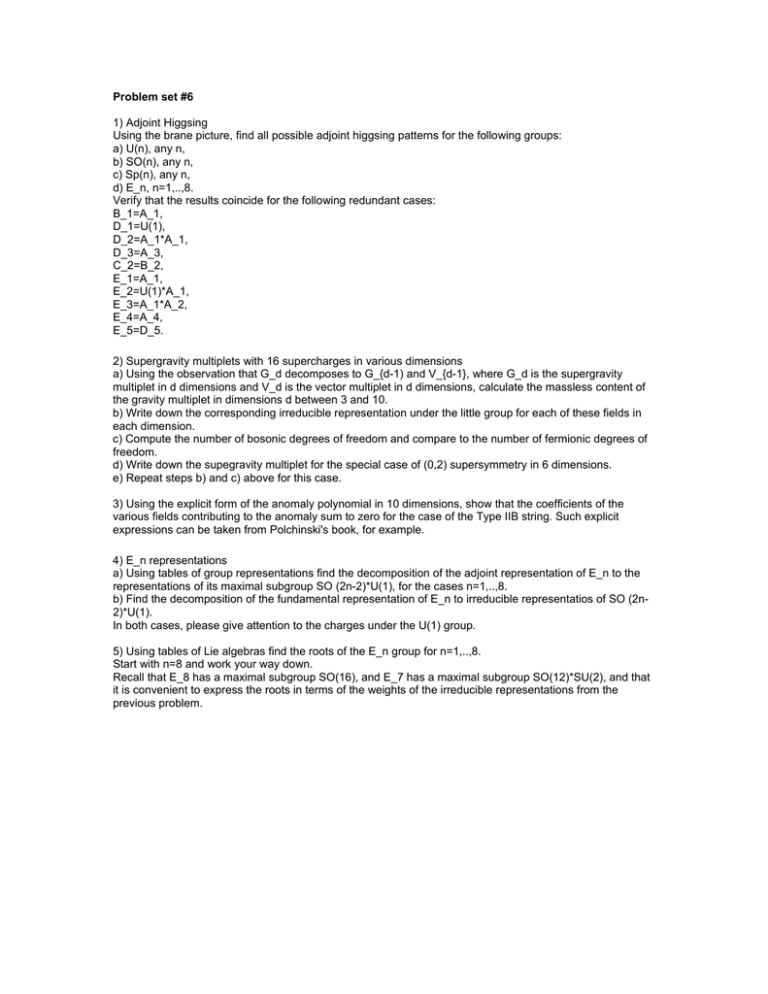
Problem set #6
1) Adjoint Higgsing Using the brane picture, find all possible adjoint higgsing patterns for the following groups: a) U(n), any n, b) SO(n), any n, c) Sp(n), any n, d) E_n, n=1,..,8. Verify that the results coincide for the following redundant cases: B_1=A_1, D_1=U(1), D_2=A_1*A_1,
D_3=A_3, C_2=B_2, E_1=A_1, E_2=U(1)*A_1,
E_3=A_1*A_2, E_4=A_4, E_5=D_5. 2) Supergravity multiplets with 16 supercharges in various dimensions a) Using the observation that G_d decomposes to G_{d-1) and V_{d-1}, where G_d is the supergravity multiplet in d dimensions and V_d is the vector multiplet in d dimensions, calculate the massless content of the gravity multiplet in dimensions d between 3 and 10. b) Write down the corresponding irreducible representation under the little group for each of these fields in
each dimension. c) Compute the number of bosonic degrees of freedom and compare to the number of fermionic degrees of freedom. d) Write down the supegravity multiplet for the special case of (0,2) supersymmetry in 6 dimensions. e) Repeat steps b) and c) above for this case. 3) Using the explicit form of the anomaly polynomial in 10 dimensions, show that the coefficients of the various fields contributing to the anomaly sum to zero for the case of the Type IIB string. Such explicit expressions can be taken from Polchinski's book, for example. 4) E_n representations a) Using tables of group representations find the decomposition of the adjoint representation of E_n to the representations of its maximal subgroup SO (2n-2)*U(1), for the cases n=1,..,8. b) Find the decomposition of the fundamental representation of E_n to irreducible representatios of SO (2n-
2)*U(1). In both cases, please give attention to the charges under the U(1) group. 5) Using tables of Lie algebras find the roots of the E_n group for n=1,..,8. Start with n=8 and work your way down. Recall that E_8 has a maximal subgroup SO(16), and E_7 has a maximal subgroup SO(12)*SU(2), and that it is convenient to express the roots in terms of the weights of the irreducible representations from the previous problem.
